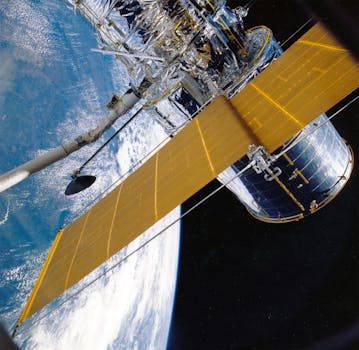LEO Satellites: Revolutionizing Global Connectivity with WordPress

LEO Satellites: Revolutionizing Global Connectivity with WordPress
Low Earth Orbit (LEO) satellites are revolutionizing global connectivity, offering faster and more reliable internet services to remote and underserved communities, and WordPress is playing a key role in this revolution. LEO satellites, which orbit the Earth at an altitude of around 500-2000 kilometers, are being used to provide high-speed internet services to areas where traditional fiber-optic cables and cell towers are not available.
The use of LEO satellites is not new, but recent advancements in technology have made them more efficient, cost-effective, and accessible. With the help of WordPress, companies are now able to manage and maintain their LEO satellite constellations more easily, allowing them to focus on providing better services to their customers.
How LEO Satellites Work
LEO satellites work by transmitting and receiving data to and from Earth-based stations, which are connected to the internet. The data is then transmitted to the satellite, which relays it to other satellites in the constellation, and finally to the destination on Earth. This process allows for fast and reliable data transfer, even in areas with limited or no connectivity.
WordPress is being used by many companies to manage their LEO satellite constellations, including tracking the satellites’ positions, monitoring their performance, and analyzing the data they collect. This allows companies to optimize their services, improve their coverage, and provide better support to their customers.
Benefits of LEO Satellites
The benefits of LEO satellites are numerous, and they have the potential to revolutionize the way we communicate and access information. Some of the benefits of LEO satellites include:
Faster and more reliable internet services: LEO satellites can provide internet speeds of up to 1 Gbps, which is comparable to fiber-optic cables. They can also provide more reliable services, with uptime of up to 99.9%.
Global coverage: LEO satellites can provide coverage to remote and underserved communities, where traditional connectivity options are not available.
Cost-effective: LEO satellites are more cost-effective than traditional connectivity options, such as fiber-optic cables and cell towers.
Low latency: LEO satellites have lower latency than traditional connectivity options, which makes them ideal for real-time applications such as video conferencing and online gaming.
Challenges and Future Developments
While LEO satellites have the potential to revolutionize global connectivity, there are still several challenges that need to be addressed. Some of the challenges include:
Interference: LEO satellites can interfere with other satellites and Earth-based stations, which can affect their performance and reliability.
Regulation: The use of LEO satellites is regulated by governments and international organizations, which can create challenges for companies that want to deploy their own constellations.
Security: LEO satellites can be vulnerable to cyber attacks, which can compromise their security and reliability.
Despite these challenges, the future of LEO satellites looks promising. Companies such as SpaceX, Amazon, and OneWeb are investing heavily in LEO satellite technology, and many experts believe that LEO satellites will play a key role in the development of the internet of things (IoT) and 5G networks.
Conclusion
In conclusion, LEO satellites are revolutionizing global connectivity, offering faster and more reliable internet services to remote and underserved communities. WordPress is playing a key role in this revolution, allowing companies to manage and maintain their LEO satellite constellations more easily. While there are still several challenges that need to be addressed, the future of LEO satellites looks promising, and they have the potential to play a key role in the development of the IoT and 5G networks.




